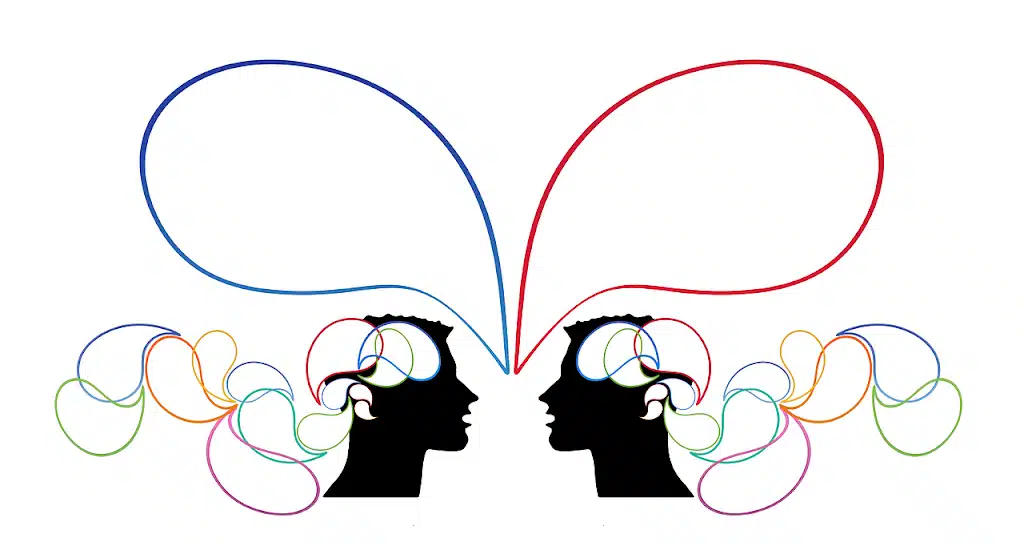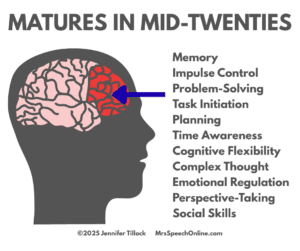
Teaching Social Emotional Language
Ever wonder why we can teach a child “happy” and “sad,” yet they still struggle with deeper emotional understanding? It might seem simple at first; after all, they’re just feelings, right? But truly understanding and managing emotions involves learning the real language of emotions – a complex inner dialogue we must learn to speak fluently, both within ourselves and with others.
This “emotional language” goes far beyond simply recognizing happy, sad, and angry faces on a chart. It delves into the intricate world of our internal experiences, the thoughts that fuel our feelings, and how we communicate those feelings through more than just our expressions.
At its core, Social-Emotional Learning (SEL) encompasses skills like understanding our own emotions (self-awareness), managing those emotions effectively (self-management), recognizing the emotions of others (social awareness), building positive relationships, and making responsible decisions. It’s about understanding the subtle cues of body language and tone of voice, and ultimately, about developing a rich vocabulary to navigate our emotional landscape.
So, how do we help children learn this vital language of emotions? It starts by looking beyond the surface and exploring the deeper layers of what it truly means to feel these emotions.
The Internal Landscape: More Than Just a Feeling Word

Think about the last time you felt truly nervous. Did you have to stop and think, “I am nervous”? Probably not. You might have felt butterflies in your stomach, sweaty palms, or a racing heart, and you had already learned the somatic expression (bodily sensations) of the emotion of nervousness. For children to truly grasp their emotions, they need to connect these somatic experiences with the feeling words.
Try this: When your child says they feel [emotion], gently ask, “Where do you feel that in your body?” or “What does that feel like inside?” Encourage them to describe the physical sensations.
The Thought Detective: Uncovering the “Why”
Often, the surface-level situation isn’t the real trigger for an emotion. As we discussed, a child angry about not being invited to play might actually be feeling rejected, fueled by the thought, “They don’t like me.” Helping children become “thought detectives” and develop the language to uncover true feelings is crucial.
- Ask: “What were you thinking when that happened?” or “What story are you telling yourself about why that happened?”
- Challenge unhelpful thoughts: Help them explore if those thoughts are entirely true. Could there be other explanations? (“Maybe they’re playing a game with a limited number of players right now.”)
- Practice reframing: Guide them to replace negative thoughts with more balanced ones. (“I can ask if I can join next time.”)
The Power of Self-Talk: Where Emotional Language Gets Real

Once children can identify their feelings and the thoughts behind them, we can introduce the powerful tool of self-talk. This is the internal dialogue we have with ourselves that can either escalate or soothe our emotions.
- Model positive self-talk: Let your child hear you talking to yourself calmly through a frustrating situation (“This is tricky, but I can take it one step at a time”).
- Brainstorm helpful phrases together: For feeling frustrated: “It’s okay to feel stuck. I can try a different way.” For feeling nervous: “I feel a little worried, but I’ve practiced, and I’ll do my best.”
- Practice using self-talk in low-stakes situations: This helps them build the habit for when big emotions hit.
Beyond the Face: Tuning into the Whole Message

Emotions aren’t just expressed through the face. Other powerful communicators of feeling include body language (slumped shoulders, crossed arms, open posture) and tone of voice (soft, sharp, shaky).
- Observe and discuss: “I noticed your voice sounded a little sad and your mouth was turned down when you said that. Are you feeling okay?” or “Look at how their body is all hunched over and they aren’t playing. I wonder if they might be feeling lonely.”
- Consider context: Emphasize that the same body language or tone can mean different things in different situations.
Learning Emotional Language in Real Life: The Power of “In-the-Moment” Coaching
Abstract scenarios in workbooks have their place, but the most impactful learning happens within the context of a child’s own life. Trusted adults can act as emotional guides, narrating feelings and thoughts as they occur.
- Make it personal: “I saw your face get red and your body got tight when your friend took your toy. It looked like you were feeling angry.”
- Model your own emotions healthily: Instead of “Be quiet so I can talk,” try, “I need you to be quiet so others can hear. Thanks for understanding.” Instead of “I’m angry you broke the rules,” try, “I’m feeling upset because I’m worried about your safety when the rules aren’t followed.”
It Starts With Us: The Adult’s Role in Emotional Learning

Here’s a crucial truth: effectively teaching SEL to children begins with our own emotional awareness and regulation. We might even need to re-learn some of our own ingrained beliefs about emotions. Were we taught to suppress certain feelings? Did we receive messages that some emotions are “bad”?
Drawing inspiration from frameworks like Dialectical Behavior Therapy (DBT) can be incredibly helpful. DBT emphasizes understanding the somatic experience, expression, body language, and thoughts associated with emotions, as well as offering practical strategies for managing intense feelings and reframing negative thought patterns.
Adults who haven’t explored their own emotional landscape may find it challenging to guide children effectively. It requires us to open our own hearts and heads and be vulnerable with children, creating a safe space for them to explore their feelings without judgment, as well as modeling those things we are trying to teach them
Moving Forward in Teaching the Real Language of Emotions:
Teaching emotional literacy is a journey, not a destination, and this journey of emotional learning for our children is deeply intertwined with our own emotional landscape. By moving beyond simple facial recognition and focusing on the internal experience, thoughts, communication, and the power of our own modeling, we can equip children with the skills they need to navigate their emotional world with confidence and resilience.

This is just the beginning of exploring the fascinating true language of feelings. What other aspects of SEL would you like us to delve into in future posts? Let me know your thoughts!
Want more SEL content? Try these articles!
- Tips for Parents: Fostering Language Development in Preschoolers
- Empowering Kids Who Stutter: Practical Tips & Resources
- Speech Therapy Wins! Building Progress Power in Kids
Here’s to a more emotionally connected world!
Social Media Icons: designed by rawpixel.com – Freepik.com













